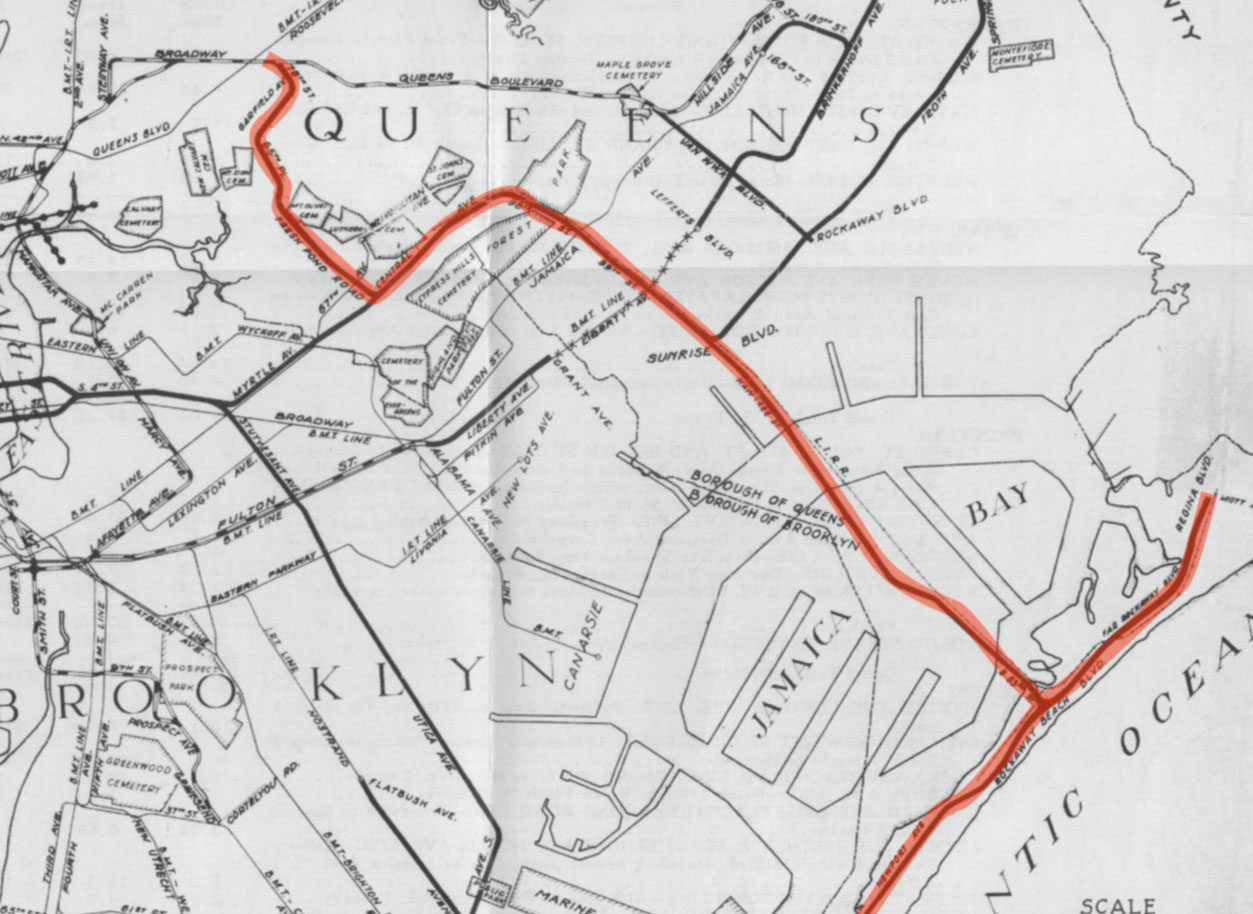Moving back into Brooklyn, we come to one of the most famous IND Second System provisions, matched only by S 4th St (Underbelly) in terms of notoriety. This provision is commonly known as the 76th St Provision, Grant Layup, or Pitkin Yard leads. A popular spot for explorers and graffiti writers (indeed, there is much notable historic graffiti inside), this spot rose to fame do to 50+ year old urban legend. Legend has it that the walls behind the bumper blocks on the lower level and the cinder block wall branching from the yard leads on the upper level are actually hollow, with a full set of tracks and a 76th St station shortly past.
Cinder block wall provision
So, why was this provision built in the first place? The IND originally intended to continue the Fulton St Line (which the A and C run on in Brooklyn) east into Queens down Pitkin Av and Linden Blvd, all the way to 229th St near the city limits. This extension would have served a large transportation desert, which now only has buses and the LIRR as options for rapid transit. To continue to this line, trains would have run through the lower level tunnel (Grant Layup, which isn’t much of a layup anymore) past where the wall and bumpers are. Trains also would have directly accessed the line from Pitkin Yard, which is why the upper level provision with the cinder block wall was built.
Concrete wall in lower level layup
Many people have wondered if the tunnel and 76th St station exist, and why they would be sealed. Joseph Brennan of Abandoned Stations came up with a conspiracy theory as an April Fools day joke many years ago about a coverup for non union labor. Somehow many people have read that article and taken it seriously. (Really, you believed that USAF officials came around the neighborhood asking about a tunnel?). The tunnel does contain signals that are very close to the bumpers/walls; there are rail ties installed on the upper level, and there is even a board in the Euclid Tower displaying a 76th St station and the interlocking. Despite these indicators, I am of the opinion that there is no 76th St station and no tunnel beyond the infamous wall. The sand behind the cinder block wall was probably just placed there to prevent flooding and water damage to the tunnel.

















































